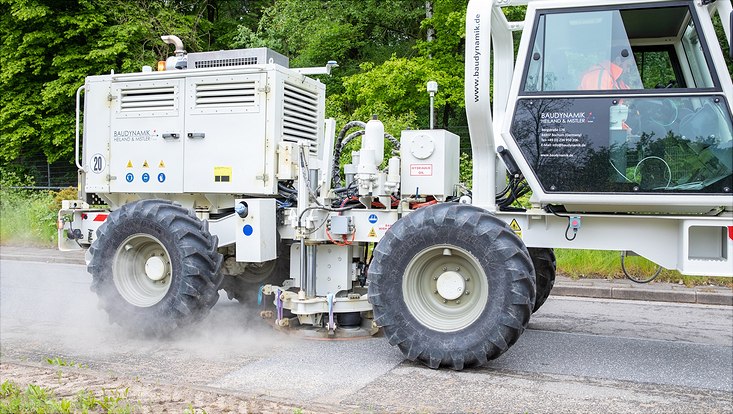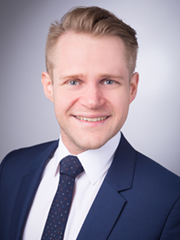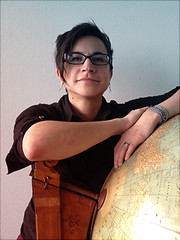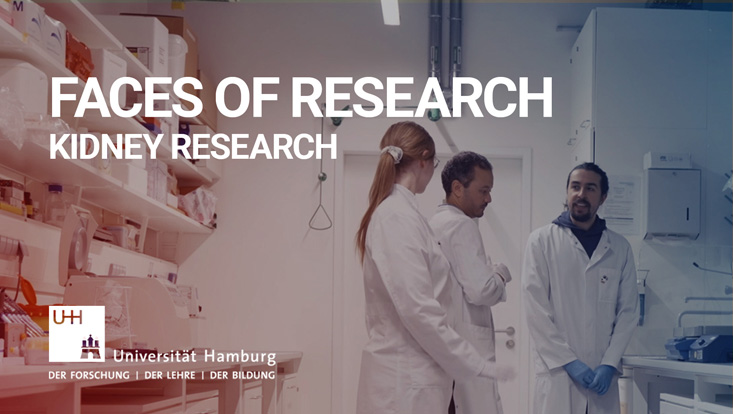Seismic measurement network at Science City Hamburg-BahrenfeldPicking Up Good Vibrations
16 June 2021, by Niklas Keller

Photo: DESY / Marta Mayer
For 2 weeks, an interdisciplinary research team measured vibrations on the DESY premises at Science City Hamburg-Bahrenfeld to study new measurement techniques using glass fiber cables. Physics experiments, climate research, and urban development can all benefit from the research. An unusual vehicle also helped out.
It is quiet at Science City Hamburg-Bahrenfeld. Then a white truck leisurely approaches the measurement site to DESY’s west. The vehicle, called a “vibro truck,” gets into position above a cross marked in chalk. Between its four wheels, it has a round plate that it sets on the ground. The wheels levitate slightly so that the plate compactor presses firmly to the ground. Then the truck begins to vibrate. “The vibrations it creates start at a low frequency of roughly 4 hertz and increase over the course of a minute, ultimately reaching 120 hertz,” explain junior professor Celine Hadziioannou from the Institute of Geophysics and junior professor Oliver Gerberding from the Institute of Experimental Physics. “The vibrations spread across the entire DESY site and we will record them over several kilometers.”

Since December 2020, researchers from Universität Hamburg, DESY, and the GFZ German Research Centre for Geosciences have joined forces to undertake their own measurements in the wake of an evaluation for which the vibro truck was being used in the first place. Their goal is to set up a seismic measurement network on the future campus of Science City Hamburg-Bahrenfeld. The initiative is called WAVE, and its researchers are using the opportunity to run their first trial with this kind of network. The vibrations caused by the vibro truck help them understand how measurement devices respond and where they should best be placed. More than 12 people are involved in the initiative, including professors from Universität Hamburg.
50 terabytes in 2 weeks
Using seismometers and geophones, the physicists and engineers are measuring the vibrations over 2 weeks. Beside the ambient vibrations which are continuously excited by human activity and natural processes, they also record the ground motion that is produced artificially by the vibro truck at various locations nearby. Furthermore, they are using another, more experimental sensor: the telecommunications fiber network consisting of normal glass fiber cables, most of which have been installed underground.

“That regular glass fiber cables can also be used as sensitive sensor is a recent development, and it has revolutionized geophysics. It allows us to record ground motion data every 10 meters along a longer stretch," explains Hadziioannou. The researchers are monitoring a total of 12 km—equivalent to 1,200 seismometers—of glass fiber cables.
This relatively new measurement method was made possible thanks to “interrogators” attached to the glass fibers. If there is motion in the underground, this affects the scattered light in the glass fibers. An interrogator measures scattered light in 10 microseconds—thus essentially in real time—and calculates the vibrations with very high spatial resolution. In this way, the entire DESY campus can be monitored for vibrations. Even the cars that drive by the many measurement sites are visible on the screen. In the 2 weeks during which the interrogators ran day and night, roughly 50 terabytes were collected.
Many promising possibilities
The WAVE initiative is convinced of the project’s manifold potential. “We hope that, thanks to this research, we can much better characterize where and when the sources of disturbances appear that impact our precise measurements,” says Gerberding. At DESY, it is crucial that experiments are not ruined by vibrations or underground disturbances. Using a seismic measurement network, it may be possible not only to identify the source of disturbances, but also to repress or retroactively correct the final results. “Until that point, however, we still need to do a lot of research,” according to Gerberding.
Gravitation research could also benefit. Gravitational waves are extraordinarily difficult to prove because they cause only very small changes in length on Earth. If the earth itself also vibrates, gravitational waves cannot be proven definitively. Gerberding and his colleagues at the Cluster of Excellence Quantum Universe expect far-reaching research progress from the combination of ground motion measurements and artificial intelligence.
Climate change and smart cities
There are also many advantages for climate research. Similar experiments using classic seismometers are already being conducted in the Cluster of Excellence Climate, Climatic Change, and Society (CLICCS) with the aim of researching changes in urban water balance. “With a seismic network, we can monitor changes underground, including those caused by climate change,” says Hadziioannou.
These networks can also be of use in the monitoring of extensive infrastructure such as the large research plants at DESY. These kinds of concepts are already being discussed with regard to “smart cities.” For example, it could be possible to identify the crackling of burning cables or bursting pipes using fibers installed in buildings.
Glass fibers are cheap and simple to install
“Installing glass fibers is very simple and cheap,” says Celine Hadziioannou. She points out that there are already several kilometers installed underground for telecommunications and that unused fibers can also already be exploited for these kinds of experiments. As part of the measurement project, for example, a fiber is being used that runs along the European XFEL from the DESY campus to Schenefeld.
“We have to understand how this technology can be used in the future,” says Hadziioannou. Questions remain—for example, about the sensitivity of the fiber sensors in comparison to classic seismometers, the optimal installation and coupling of fibers in the ground, and the real-time processing of large quantities of data using artificial intelligence.
Meeting up for a beer
The WAVE initiative only recently came into being. In December, the first researchers came together and over time further partners joined. The next steps were discussed in hour-long Zoom meetings. “In the last 6 months, a great team has developed that promotes the project with a lot of joy and fascination. It was only possible with everyone on board,” say Hadziioannou and Gerberding. The vibro truck that was used for the evaluation, they say, was very fortuitous for the team. Next, however, the interdisciplinary group would like to meet up for a beer, because this kind of casual get-together was not possible during the corona pandemic.





